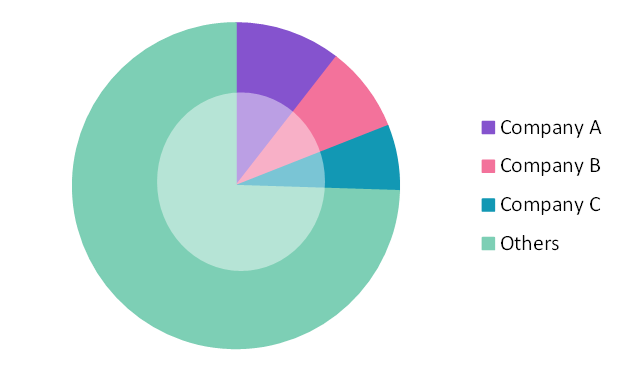Coffee Market: Size, Share, Trends & Forecast (2024-2029)
The market report presents a thorough analysis segmented by Type (Whole-bean, Ground Coffee, Instant Coffee, Coffee Pods Capsules); by Distribution Channel (Supermarkets/Hypermarkets, Convenience Stores, Specialist Retailers, Others); by Geography (North America, South America, Asia Pacific, Europe, The Middle East, Africa).
Outlook

- The coffee market is estimated to be at USD 146.22 Bn in 2025 and is anticipated to reach USD 182.50 Bn in 2030.
- The coffee market is registering a CAGR of 4.53% during the forecast period 2025-2030.
- The global coffee market is experiencing steady growth, driven by rising demand for specialty coffee, convenience products like ready-to-drink (RTD) beverages, and sustainable sourcing practices. Consumers, especially younger generations, are seeking premium and functional coffee options. However, the market faces challenges such as climate change and price volatility. Innovations in packaging, traceability, and health-focused coffee blends continue to shape the industry’s future trajectory.
Request a free sample.
Ecosystem

- The participants in the global coffee industry are always developing their strategies to preserve a competitive advantage.
- Companies focus on mergers and acquisitions, partnerships, or Research and Development (R&D) investments to stay competitive.
- Several important entities in the coffee market include Nestlé S.A.; Luigi Lavazza S.p.A.; The Kraft Heinz Co.; Massimo Zanetti Beverage Group S.p.A.; JAB Holding Co. S.à.r.l.; and others.
Ask for customization.
Findings
| Attributes | Values |
|---|---|
| Historical Period | 2019-2023 |
| Base Year | 2024 |
| Forecast Period | 2025-2030 |
| Market Size (2025) | USD 146.22 Bn |
| Market Size (2030) | USD 182.50 Bn |
| Growth Rate | 4.53% CAGR from 2025 to 2030 |
| Key Segments | Type (Whole-bean, Ground Coffee, Instant Coffee, Coffee Pods Capsules); Distribution Channel (Supermarkets/Hypermarkets, Convenience Stores, Specialist Retailers, Others); Geography (North America, South America, Asia Pacific, Europe, The Middle East, Africa) |
| Key Vendors | Nestlé S.A.; Luigi Lavazza S.p.A.; The Kraft Heinz Co.; Massimo Zanetti Beverage Group S.p.A.; JAB Holding Co. S.à.r.l. |
| Key Countries | The US; Canada; Mexico; Colombia; Argentina; Chile; China; India; Japan; South Korea; The UK; Germany; Italy; France; Turkey; UAE; Saudi Arabia; Egypt; South Africa |
| Largest Market | North America |
Get a free quote.
Trends
- Expansion of Cold Brew and Ready-to-Drink Coffee Products: Coffee brands are expanding into cold brew and ready-to-drink (RTD) coffee segments. These products offer convenience and appeal to consumers seeking quick, flavorful alternatives to traditional hot coffee. Starbucks and Blue Bottle Coffee have launched innovative cold brew cans, tapping into the demand for ready-made beverages.
- Sustainable Coffee Packaging: Companies are introducing eco-friendly packaging solutions, such as compostable pods and biodegradable bags, to reduce environmental impact. Nespresso has developed fully recyclable aluminum capsules, while other brands use plant-based materials to appeal to sustainability-conscious consumers.
- Blockchain for Coffee Traceability: Blockchain technology is being applied to enhance coffee traceability and transparency. Platforms like IBM’s Food Trust are being adopted to track the entire coffee supply chain, from farm to cup. Consumers can scan QR codes on packaging to verify the origin and ethical sourcing of their coffee, which improves trust in fair-trade practices.
Speak to analyst.
Catalysts
- Growing Consumer Preference for Specialty Coffee: Increasing consumer interest in high-quality artisanal coffee is driving the demand for specialty coffee beans, single-origin products, and barista-style Coffee experiences. Coffee shops and at-home brewing tools that offer premium experiences, such as pour-over kits and espresso machines, are seeing higher sales.
- Rapid Expansion of Coffee Shop Chains and E-Commerce: The global increase of coffee shop chains like Starbucks, Costa Coffee, and Dunkin’ Donuts, along with the growth of e-commerce platforms for coffee subscription services, has expanded access to premium and everyday coffee options. Online platforms allow consumers to explore diverse coffee products from around the world, increasing overall coffee consumption.
- Rising Health Consciousness and Functional Coffee Trends: Health-conscious consumers are increasingly seeking coffee products that offer additional health benefits. This has led to the rise of functional coffee, which includes ingredients such as protein, collagen, Medium Chain Triglycerides (MCT) oil, and adaptogens. Brands are promoting these coffees as wellness drinks that can enhance energy, focus, and overall health. For example, mushroom-infused coffee from companies like Four Sigmatic is marketed for its cognitive benefits, which appeal to a growing segment of health-focused consumers.
Inquire before buying.
Restraints
- Climate Change Impact on Coffee Production: Rising temperatures and unpredictable weather patterns due to climate change are affecting coffee-growing regions, particularly in Latin America, Africa, and Asia. These conditions lead to reduced crop yields, lower quality beans, and an increased risk of diseases such as coffee rust, making it difficult for farmers to maintain consistent production.
- Fluctuating Coffee Bean Prices: Volatile coffee prices in the global commodity market pose a significant challenge for coffee producers, retailers, and consumers. Factors like changing weather, political instability in key coffee-producing regions, and fluctuations in demand contribute to price instability, which makes it harder for businesses to plan and maintain profitability.
- Supply Chain Disruptions: The coffee supply chain, which often spans multiple continents, is susceptible to disruptions such as logistical delays, transportation issues, and labor shortages. These disruptions can affect the timely delivery of beans and coffee products.
Personalize this research.
Hotspot

Explore purchase options.
Table of Contents
| 1. Introduction 1.1. Research Methodology 1.2. Scope of the Study 2. Market Overview / Executive Summary 2.1. Global Coffee Market (2019 – 2023) 2.2. Global Coffee Market (2024 – 2030) 3. Market Segmentation 3.1. Global Coffee Market by Type 3.1.1. Whole-bean 3.1.2. Ground Coffee 3.1.3. Instant Coffee 3.1.4. Coffee Pods Capsules 3.2. Global Coffee Market by Distribution Channel 3.2.1. Supermarkets/Hypermarkets 3.2.2. Convenience Stores 3.2.3. Specialist Retailers 3.2.4. Others 4. Regional Segmentation 4.1. North America 4.1.1. The US 4.1.2. Canada 4.1.3. Mexico 4.2. South America 4.2.1. Colombia 4.2.2. Argentina 4.2.3. Chile 4.2.4. Rest of South America 4.3. Asia Pacific 4.3.1. China 4.3.2. India 4.3.3. Japan 4.3.4. South Korea 4.3.5. Rest of Asia Pacific 4.4. Europe 4.4.1. The UK 4.4.2. Germany 4.4.3. Italy 4.4.4. France 4.4.5. Rest of Europe 4.5. The Middle East 4.5.1. Turkey 4.5.2. UAE 4.5.3. Saudi Arabia 4.5.4. Rest of the Middle East 4.6. Africa 4.6.1. Egypt 4.6.2. South Africa 4.6.3. Rest of Africa 5. Value Chain Analysis of the Global Coffee Market 6. Porter Five Forces Analysis 6.1. Threats of New Entrants 6.2. Threats of Substitutes 6.3. Bargaining Power of Buyers 6.4. Bargaining Power of Suppliers 6.5. Competition in the Industry 7. Trends, Drivers and Challenges Analysis 7.1. Market Trends 7.1.1. Market Trend 1 7.1.2. Market Trend 2 7.1.3. Market Trend 3 7.2. Market Drivers 7.2.1. Market Driver 1 7.2.2. Market Driver 2 7.2.3. Market Driver 3 7.3. Market Challenges 7.3.1. Market Challenge 1 7.3.2. Market Challenge 2 7.3.3. Market Challenge 3 8. Opportunities Analysis 8.1. Market Opportunity 1 8.2. Market Opportunity 2 8.3. Market Opportunity 3 9. Competitive Landscape 9.1. Nestlé S.A. 9.2. Luigi Lavazza S.p.A. 9.3. The Kraft Heinz Co. 9.4. Massimo Zanetti Beverage Group S.p.A. 9.5. JAB Holding Co. S.à.r.l. 9.6. Company 6 9.7. Company 7 9.8. Company 8 9.9. Company 9 9.10. Company 10 |
Know the research methodology.
Coffee Market – FAQs
1. What is the current size of the coffee market?
Ans. In 2025, the coffee market size is USD 146.22 Bn.
2. Who are the major vendors in the coffee market?
Ans. The major vendors in the coffee market are Nestlé S.A.; Luigi Lavazza S.p.A.; The Kraft Heinz Co.; Massimo Zanetti Beverage Group S.p.A.; JAB Holding Co. S.à.r.l.
3. Which segments are covered under the coffee market segments analysis?
Ans. The coffee market report offers in-depth insights into Type, Distribution Channel, and Geography.
